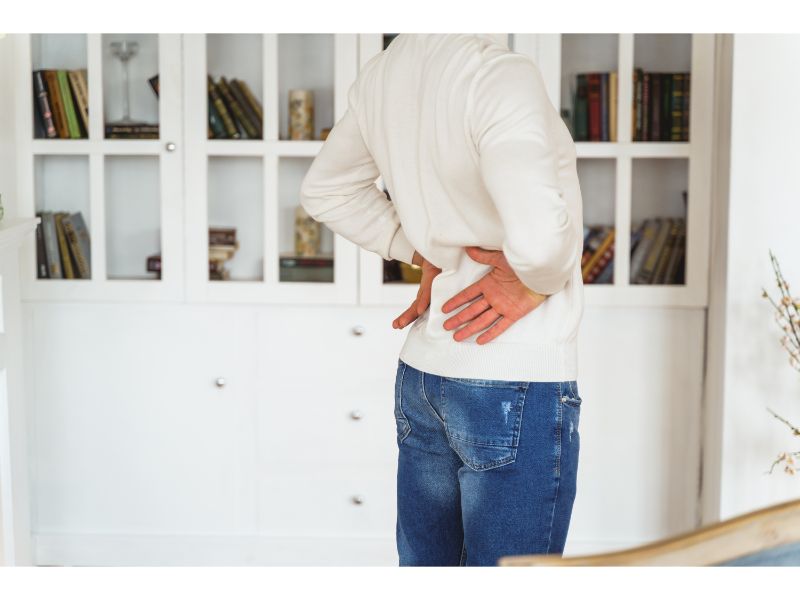
Top Exercises for Treating Lower Back Pain
If you have lower back pain physical therapists suggest doing both stretching and strengthening exercises to relieve it. They may also help prevent it from coming back.
Stretching can be gentle and effective at reducing pain but its important to use caution when performing new stretches. It’s best to speak with your doctor if you have any injury or health concerns especially if you experience pain while you’re stretching.
Leg Lifts
Leg lifts are a great exercise for treating lower back pain, but it’s important to do them the right way. Many people do them incorrectly, which can cause a lot of stress on the spine.
To do leg lifts correctly, keep your core tight and straighten your back. This will help minimize the load placed on your spine while also working out all of the major muscle groups in one movement.

Leg lifts are a beneficial exercise for treating lower back pain as they engage the core and lower back muscles. Consult with a healthcare professional like La Clinica Physical Therapy for safe and effective pulled back exercises.
Another thing to watch for is excess forward lean during the movement. Excessive forward lean is often the reason why most exercises like Romanian deadlifts and good mornings are uncomfortable as they place a large amount of loading on your lower back without giving it any real benefit.
When doing any type of exercise that places excessive strain on your back, be sure to stop the movement or change the intensity and weight to make it less taxing on your back. This could include switching to more unilateral based movements, doing them with dumbbells rather than barbells, or simply doing them with fewer reps and sets.
Toe-Toes
Your feet guide the movement of your entire body, and if you suffer from back pain, it could be the result of a problem in your feet.
Fortunately, foot stretches can relieve pain and help you avoid some common problems that cause pain elsewhere in the body. One of the most popular exercises for aching lower backs is toe-toes.
A toe-toe stretch involves raising one leg and looping a towel under the ball of your foot. Hold this position for 15 to 30 seconds and repeat with each leg.
Toe-toes can be effective, but they stress your disks and ligaments in the spine. They also put a lot of strain on your hamstrings and lower back muscles.
Another potential problem causing back pain is a condition known as hammertoe. This deformity results from an abnormal bend in the middle joint of the second, third, fourth, or fifth toe. It’s usually not painful, but it can cause corns or calluses to develop on the top of the toe.
Pelvic Tilt
Pelvic tilt is a great exercise for restoring proper posture and alignment of the spine. It also has the added benefits of stretching muscles in the buttocks and strengthening stomach muscles.
The pelvis is a wedge-shaped bone at the bottom of the spinal column between the two iliac bones. Its position determines how your legs rotate, which can affect the way your feet and hips function.
As humans grow, one or both of your legs can be slightly longer or shorter than the other, which is normal but can cause pelvic tilt to develop.
If you have a significant difference in leg length, it’s best to work on this condition during puberty. Otherwise, it will only get worse as you age.
Start with basic pelvic tilt exercises. Once you’re confident with your abs bracing and your low back against the ground, perform single leg lowers and double leg lowers.
Knee-to-Chest Stretch
The knee-to-chest stretch is one of the most effective lower back stretches for relieving pain. It stretches the erector spinae, latissimus dorsi, gluteus medius, and gluteus minimus muscles as well as the thoracolumbar fascia.
To perform this stretch, lie on your back with both legs bent. Wrap your hands around one leg and pull it toward your chest. Hold this position for 10 to 30 seconds, and repeat with the other leg.
Alternatively, you can perform this stretch while sitting in a chair with your knees together and feet flat on the floor. Then, rotate your body to the side until you feel a stretch in your back.
Performing this stretch passively (with your legs and hips as relaxed as possible) helps you reach your low back muscles better than pulling your knees to your chest. It also helps you achieve a deeper stretch.
